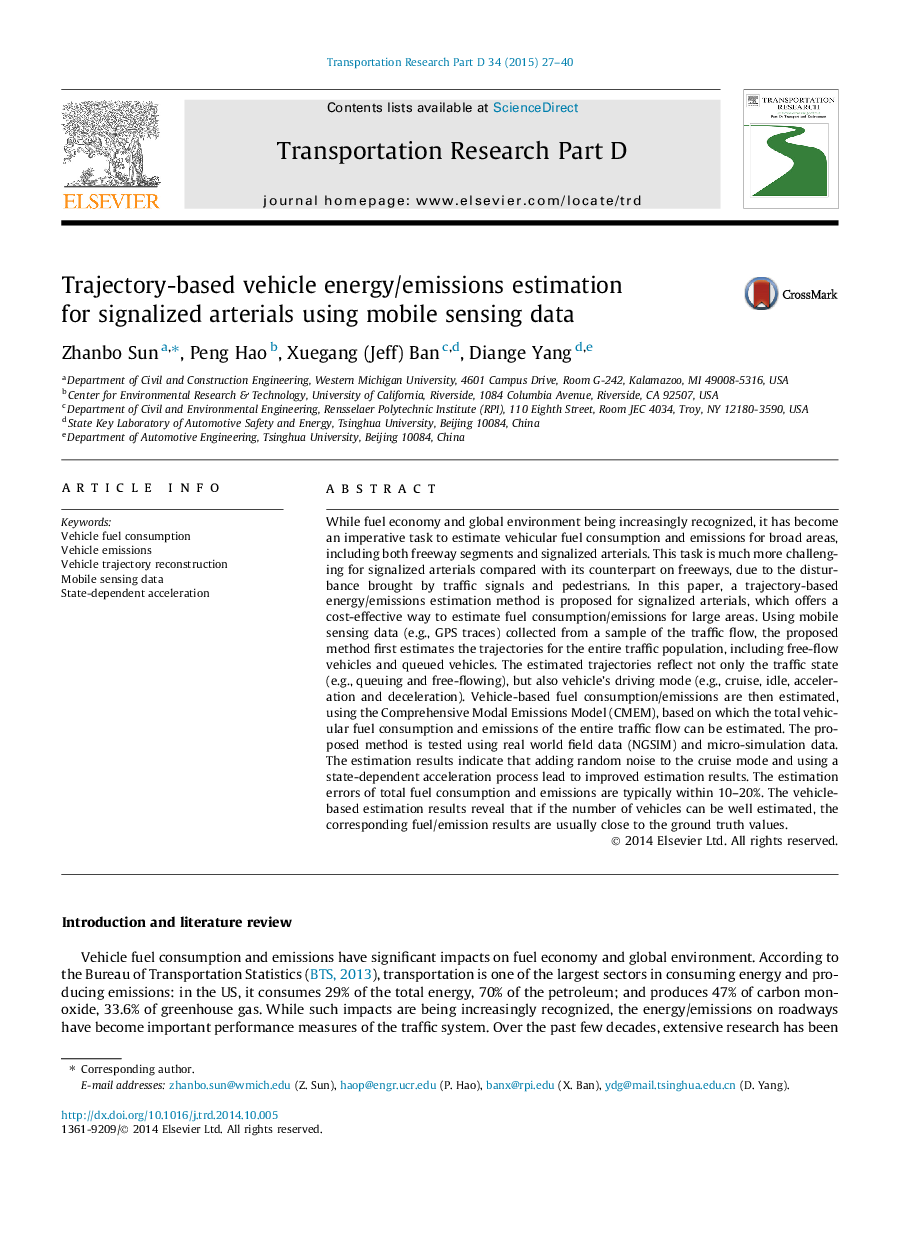| کد مقاله | کد نشریه | سال انتشار | مقاله انگلیسی | نسخه تمام متن |
|---|---|---|---|---|
| 7500634 | 1485889 | 2015 | 14 صفحه PDF | دانلود رایگان |
عنوان انگلیسی مقاله ISI
Trajectory-based vehicle energy/emissions estimation for signalized arterials using mobile sensing data
ترجمه فارسی عنوان
برآورد انرژی / انتشار خودرو بر اساس مسیریابی برای شریان های سیگنال داده با استفاده از داده های حسگر تلفن همراه
دانلود مقاله + سفارش ترجمه
دانلود مقاله ISI انگلیسی
رایگان برای ایرانیان
کلمات کلیدی
مصرف سوخت خودرو، انتشار خودرو، بازسازی مسیر تراکتور، اطلاعات حسگر تلفن همراه، شتاب وابسته به دولت،
موضوعات مرتبط
علوم زیستی و بیوفناوری
علوم محیط زیست
علوم زیست محیطی (عمومی)
چکیده انگلیسی
While fuel economy and global environment being increasingly recognized, it has become an imperative task to estimate vehicular fuel consumption and emissions for broad areas, including both freeway segments and signalized arterials. This task is much more challenging for signalized arterials compared with its counterpart on freeways, due to the disturbance brought by traffic signals and pedestrians. In this paper, a trajectory-based energy/emissions estimation method is proposed for signalized arterials, which offers a cost-effective way to estimate fuel consumption/emissions for large areas. Using mobile sensing data (e.g., GPS traces) collected from a sample of the traffic flow, the proposed method first estimates the trajectories for the entire traffic population, including free-flow vehicles and queued vehicles. The estimated trajectories reflect not only the traffic state (e.g., queuing and free-flowing), but also vehicle's driving mode (e.g., cruise, idle, acceleration and deceleration). Vehicle-based fuel consumption/emissions are then estimated, using the Comprehensive Modal Emissions Model (CMEM), based on which the total vehicular fuel consumption and emissions of the entire traffic flow can be estimated. The proposed method is tested using real world field data (NGSIM) and micro-simulation data. The estimation results indicate that adding random noise to the cruise mode and using a state-dependent acceleration process lead to improved estimation results. The estimation errors of total fuel consumption and emissions are typically within 10-20%. The vehicle-based estimation results reveal that if the number of vehicles can be well estimated, the corresponding fuel/emission results are usually close to the ground truth values.
ناشر
Database: Elsevier - ScienceDirect (ساینس دایرکت)
Journal: Transportation Research Part D: Transport and Environment - Volume 34, January 2015, Pages 27-40
Journal: Transportation Research Part D: Transport and Environment - Volume 34, January 2015, Pages 27-40
نویسندگان
Zhanbo Sun, Peng Hao, Xuegang (Jeff) Ban, Diange Yang,
